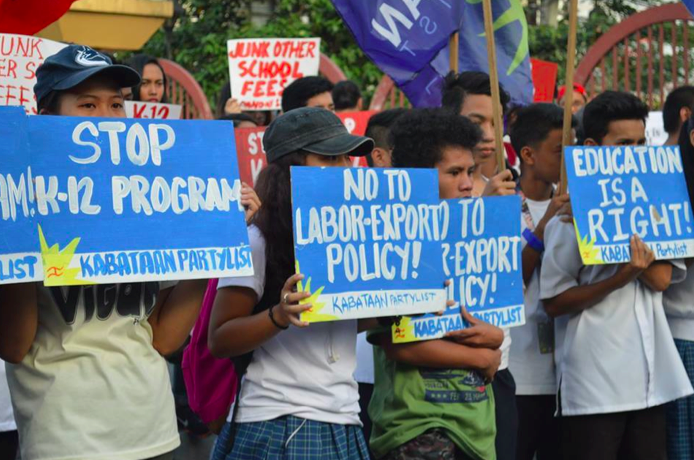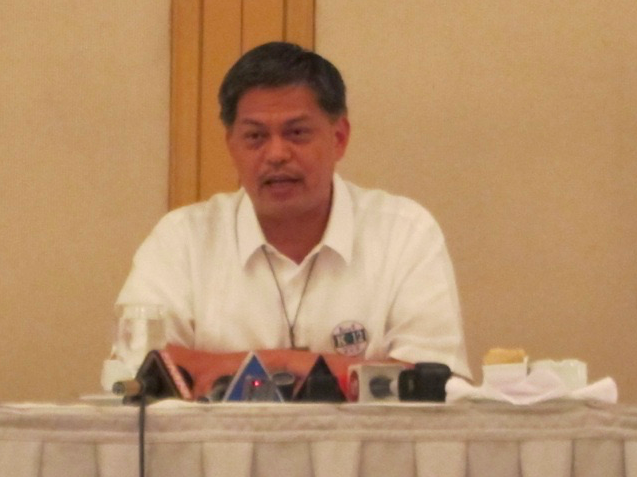K to 12 Education Program – A step in the right direction
Finally some good news from the Aquino administration! President Aquino formally launched his flagship education program Kindergarten to Year 12 Program, or the K to 12 Program yesterday.
This is a concrete step to address the much needed improvements that are sorely needed to improve our basic education and give our graduates better training, with the hope of poverty alleviation down the road.
This is a program that we can and should all get behind! Parents may initially think that this is just a waste of money or it will just serve to delay the graduation of their children. However, this is a long-term investment in their future. If implemented properly, two extra years in school can go a long way in helping our graduates have a better chance at a better future.
If there’s a lasting legacy of PNoy’s administration, it will be this.
Current program
Our current education program has 6 years of grade school and 4 years of high school, resulting in only ten years of basic education. Most of the curriculum involves memorization. To get things going, universal kindergarten was started last 2011 as a transition phase for the changes in the education set-up.
New program
The new education curriculum will be implemented starting this June. It will have 12 years of basic education instead of the current ten year model. The goal of the changes is to better equip our graduates “for recognition of professionals abroad.”
Critical thinking will be another aspect of the program. This will be a much needed life long skill that students can better use in life, instead of memorizing data that won’t have much use upon taken a test or upon graduation.
The President himself has said that the current system is “force feeding” students to “swallow, chew…and there is no chance for students to savor knowledge”. This is why information goes in one ear and out the other.
According to Education Secretary Armin Luistro, with the new curriculum, each Filipino child will be given the necessary abilities requisite of the our century – also called 21st-century skills.
Basic technical competency skills taught at Technical Education and Skills Development Authority (TESDA) will now be taught as part of the high school program. At the same time, Commission on Higher Education (CHED) will now move some of the general education subjects that are commonly taught in college to the last years of high school. Those that complete year 12 will be given a national certification by TESDA, certifying that the student has the technical and vocation skills to become employed.
Kindergarten at 6 years old will officially kick off a child’s education program. Although this is still not mandatory by law, the DepEd decided to take initiative and has started this in 2011.
From aged 6 to 11, a student will be in elementary school for 6 years. The difference in the new program will be the introduction of a junior high school and senior high school program.
Junior high school will be considered grades 7 to 10, which accounts for 4 years. The next phase will be a senior high school program lasting 2 years, creating grade 11 and grade 12. This will make the child complete his basic education at 17 or 18 years of age, which is in keeping with the rest of the world.
Each phase of the changes will be introduced in stages, with a year of school being added as time goes on. By 2018, the country should have its first batch of graduates under the new program.
Change is intimidating
When the plans to overhaul the education program of the country were announced, there were mixed reactions. For the parents and students, it seemed like the next few years would be a period of uncertainty. The batches most affected by the changes are those who are currently in grade 5, 6 and 7. Who can’t help but feel like a guinea pig being experimented on?
Many parents simply can’t wait for their kids to get out of school so they can work and help out with the family finances. Our graduates are some of the youngest in the world, at 15 to 16 years of age.
We are left behind
In Asia, we are the only country that still has a 10 year basic education program. In the rest of the world, only two other African nations have a ten year basic education program.
Future plans
President Aquino revealed that in the future, all the reading materials used in the country’s public schools will be “tablet based.” This sounds like a pipe dream since many private schools in the country don’t even have this capability yet. If the President is able to pull this off successfully, then that is another feather on his cap, and certainly a major leap towards the 21stcentury. Let’s hope the students don’t sell the tablets for quick cash instead.
Currently, La Salle Greenhills has an experimental program that is technology based.
The DepEd has gotten the lion’s share of the national budget, with P238.8 billion in funding, with P2.4 billion for the Kindergarten program. However, we need more. The United Nations recommends a minimum of at least 6% of the GDP when it comes to education spending. We currently allot about 3%.
In 2005, the government spent only $138 per student or about P6 a day, which is way below what other nations are spending per child on education. In Thailand, each child gets about $852 a year.
Addressing other issues
It’s about time someone took a hard look at our current education program and did something about it. We are becoming laggards and our graduates are losing their competitive edge. Even our much-touted English ability isn’t all that great anymore. Thanks to texting, our spelling is much worse, grammar is out the window and proper diction is a thing of the past.
We need to keep our students in school. Our country has such a high drop out rate, and many students don’t even make it to high school under the current program. The Conditional Cash Transfer (CCT) Program to keep kids in school is a temporary measure. The government should make school more accessible. Perhaps providing free bus service transportation is one way to do it.
Parents need to stop thinking of their children as young free laborers and keep their kids in school. Children need to be in school learning instead of working or begging.
There are still the recurring issues about the need for more adequate classrooms to accommodate the never-ending number of students who need to learn. These classrooms should be equipped with the proper tools and each student should have their basic books and school supplies provided for. We need about P100 billion for more classrooms and P63 million for books.
There is also a need to improve the competency skills of our teachers. Bad teachers can only produce bad students. If the stock knowledge of the teachers themselves are wrong or outdated, then how can they teach their students the latest, most current and relevant information?
Also, the increased budget should be strongly safeguarded against corruption. Graft from procurement is a serious problem that has a very detrimental impact on the education system.
It doesn’t matter how many years of school you put forth if there aren’t any classrooms to put these students in, no good teachers to teach, no books to read and no materials to make use of.
While the issues may seem insurmountable, change will come if we allow it to happen. Hitches are to be expected, but that shouldn’t stop us from trying to improve the situation. The key is in the proper implementation. It will be long after Aquino has left office that we’ll see any results, but we’re keeping our fingers crossed.
Link to download documents and know more about the K to 12 program.
Photos from President Noy facebook page. Some rights reserved.



